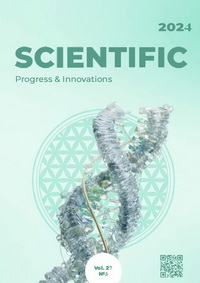Characteristics of the latent period of staphylococcal phages isolated from pyoderma in dogs
DOI:
https://doi.org/10.31210/spi2024.27.03.15Keywords:
bacteriophages, latent period of phages, pyoderma, dogs, antibiotic resistance, staphylococciAbstract
One of the diseases of dogs for which antibiotics are often used is pyoderma. The causative agents of this disease are usually autochthonous skin bacteria of the species Staphylococcus spp. (S. pseudintermedius, S. aureus and others). However, the ability to effectively treat pyoderma in dogs is now severely limited by the emergence of multidrug-resistant, methicillin-resistant staphylococci (MRS). Taking this trend into account, we set ourselves the task of developing a safe method of treating this disease without the use of antibiotics, but with the help of bacteriophages lytic to staphylococci isolated from the skin. The purpose of this work was to check the lytic cycle of the development of selected four bacteriophages active against species of bacteria of the genus Staphylococcus, which will later become the basis of a phage preparation for the treatment of pyoderma in dogs. Isolation, identification and production of staphylococcal bacteriophages was carried out according to the generally accepted method of Oliveira et al. To establish the latent period of the isolated phages, the method of a single cycle of phage reproduction was used. It was established that phage S.a 4 during cultivation in a medium with Staphylococcus aureus was characterized by a gradual release of virions, and at 50 min of incubation, the maximum number of phage colonies in the medium was recorded – 7.65 log BUO/ml. The study of the dynamics of the development of phage S.p 2 revealed a more intense infectious process than phage S.a 4. In particular, the latent period of phage S.p 2 was 10 minutes shorter than that of phage S.a 4 and was 40 minutes. During this time, phage development occurred with the destruction of staphylococcal cells and the release of a large number of phages of 7.91 log BUO/ml, which is considered good because it will contribute to the infection of other microbial cells in the inflammatory focus. The infection process with the participation of phage S.she 3 was characterized by a short latent period, since the maximum number of vibrios was released at the 40 th minute of incubation. At the same time, during the development of this phage, a smaller number of virions is released, compared with the development of phages S.a 4 and S.p 2. The lytic process with the participation of phage S.e 5 was approximately similar to phage S.she 3. The only difference was that the phage S.she 3 latent period was 10 min longer and amounted to 50 min, compared to phage S.e 5 (40 min). Therefore, all isolated phages had a satisfactory latent period, which makes it possible to use them for the production of a bacteriophage preparation for the treatment of inflammatory processes on the skin of dogs.
Downloads
Published
How to Cite
Issue
Section
License
Copyright (c) 2024 Scientific Progress & Innovations

This work is licensed under a Creative Commons Attribution 4.0 International License.

 Creative Commons Attribution 4.0 International Licens
Creative Commons Attribution 4.0 International Licens